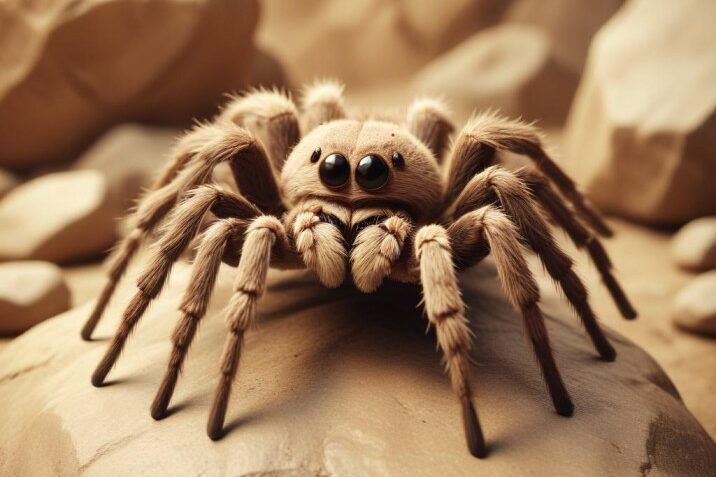Tarantulas are intriguing creatures that have captivated human imagination for centuries. But have you ever wondered why are they called tarantulas? This article will unravel the mystery behind their name, delve into their fascinating history, and explore their unique characteristics. Whether you’re a curious student, an intrigued parent, or just someone fascinated by spiders, this article is tailored to give you all the information you need in a simple, engaging way.
Introduction Why they are called Tarantulas:
Table of Contents
When you hear the word tarantula, what comes to mind? For many, it’s the image of a large, hairy spider. But did you know that the name “tarantula” has a rich and fascinating history that dates back centuries? In this article, we will explore the origins of the name, how these spiders came to be known as tarantulas, and what makes them so unique in the world of arachnids. We’ll also provide interesting facts and answer some of the most common questions about these incredible creatures. So, let’s dive into the world of tarantulas and uncover the secrets behind their name!

The Origin of the Name “Tarantula”
The Tarantula Dance
The name “tarantula” actually comes from the Italian city of Taranto, in the region of Apulia. In the 14th century, people believed that being bitten by a spider in this region caused a disease called tarantism. The only cure, they thought, was to perform a wild dance known as the “tarantella.”
The Spider Behind the Name
Interestingly, the spider originally associated with tarantism was not the tarantula we know today but a smaller spider called the wolf spider (Lycosa tarantula). Over time, explorers and naturalists began using the name “tarantula” for large, hairy spiders they encountered in the Americas, and the name stuck!
The Shift to the New World
As explorers traveled to the Americas, they encountered large, hairy spiders that were quite different from the wolf spiders of Europe. These spiders, which belonged to the family Theraphosidae, were similar in size and appearance, and so they began to be called tarantulas. The name evolved, and today, tarantulas are known for their distinct characteristics and are found primarily in tropical and subtropical regions.
Characteristics of Tarantulas Why they are called Tarantulas:
Physical Appearance
Tarantulas are known for their large size, with some species having a leg span of up to 12 inches! They are covered in hairs called setae, which they use to sense vibrations and detect prey. Their bodies are divided into two main parts: the cephalothorax and the abdomen.
Table of Tarantula Characteristics
| Characteristic | Description |
|---|---|
| Size | Can range from 2 to 12 inches in leg span |
| Body Parts | Cephalothorax and abdomen |
| Hair (Setae) | Used for sensing vibrations and detecting prey |
| Legs | Eight legs with two claws at the tip |
| Lifespan | Females can live up to 30 years; males typically 7-10 years |
Behavior and Habitat
Tarantulas are primarily nocturnal and are known for their burrowing habits. They create burrows or hide under rocks and logs. Most tarantulas are found in warm climates, including regions of the Americas, Africa, and Asia.
Diet
Tarantulas are carnivorous and primarily feed on insects, but larger species can prey on small mammals and birds. They use their strong jaws and venom to subdue their prey.
The Unique Features of Tarantulas
Venom and Fangs
Tarantulas have large fangs that they use to inject venom into their prey. While their venom is potent for small animals, it is usually not harmful to humans. The venom is used to liquefy the insides of their prey, making it easier to consume.
Molting Process
Tarantulas grow by molting, a process where they shed their old exoskeleton and form a new one. This process is fascinating to watch and is critical for their growth and development. During molting, tarantulas are vulnerable to predators and need a safe, quiet place to complete the process.
Common Misconceptions About Tarantulas
Dangerous to Humans?
One of the biggest misconceptions is that tarantulas are highly dangerous to humans. In reality, tarantula bites are rare and their venom is not life-threatening to humans. The bite may cause mild pain and swelling, similar to a bee sting.
Tarantula Myths
Many myths surround tarantulas, including that they can jump high distances and are aggressive hunters. While they can leap short distances, they are generally shy and prefer to avoid confrontation.
Fascinating Facts About Tarantulas
Diversity of Species
There are over 1,000 species of tarantulas worldwide! They vary in color, size, and habitat, making them one of the most diverse groups of spiders.
Unique Defense Mechanisms
Tarantulas have unique defense mechanisms, including uricating hairs, which they can flick at predators to irritate their skin and eyes. Some species also use their large fangs to intimidate potential threats.
Conclusion about Why they are called Tarantulas:
In conclusion, tarantulas are incredible creatures with a rich history and unique characteristics. The name “tarantula” has evolved from a small spider in Italy to a term that encompasses a diverse group of large, hairy spiders found around the world. By understanding their origins and features, we can appreciate these fascinating arachnids and dispel some of the myths that surround them. Whether you’re a budding arachnologist or simply curious about these creatures, we hope this article has provided you with valuable insights into the world of tarantulas.
FAQs About About Why are they Tarantulas
1. Why are they called tarantulas?
They are called tarantulas after the Italian city of Taranto, where a spider-related disease called tarantism was believed to be caused by a spider bite.
2. Are tarantula bites dangerous?
Tarantula bites are generally not dangerous to humans and are similar to a bee sting in terms of pain and swelling.
3. What do tarantulas eat?
Tarantulas primarily eat insects, but larger species can also eat small mammals and birds.
4. How long do tarantulas live?
Female tarantulas can live up to 30 years, while males typically live 7-10 years.
5. Do tarantulas shed their skin?
Yes, tarantulas undergo a process called molting where they shed their old exoskeleton to grow.

